To clean gutters in New Jersey, inspect and remove debris manually or with tools like a scoop or blower. Flush them with a hose, check downspouts for blockages, and adhere to local safety regulations and environmental guidelines.
Table of contents
What is a Gutter?
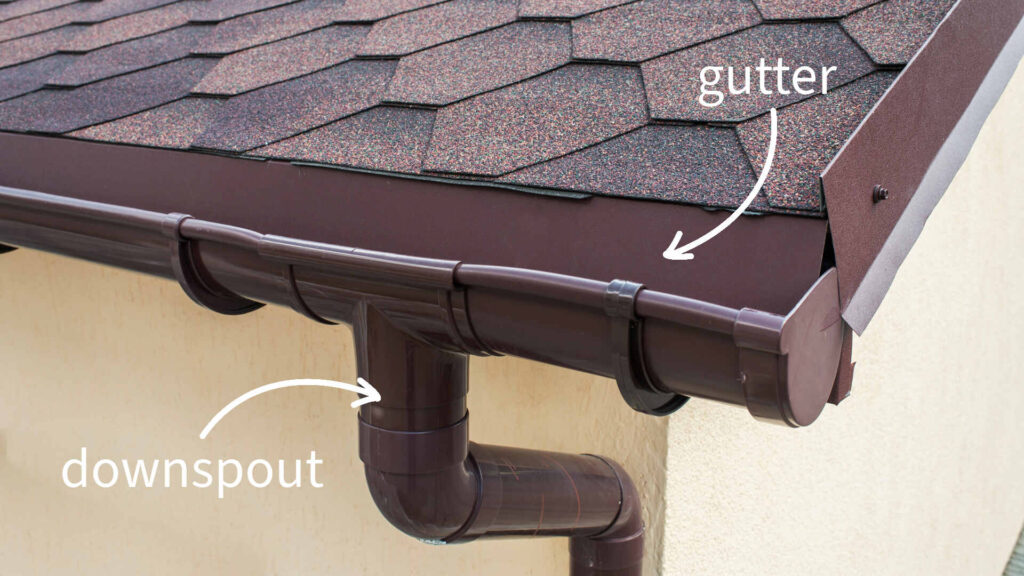
When we talk about maintaining our homes, one component that often gets overlooked is the humble gutter. But what exactly is a gutter? A gutter is a channel or trough, typically made from metal or plastic, that runs along the edge of a roof. Its primary role? To collect and divert rainwater away from the structure of the house.
But gutters are more than just simple water channels. They are a crucial part of your home’s defense system against the elements. In regions like New Jersey, gutters play a vital role in protecting the integrity of your home. By directing water away from the foundation, gutters prevent a myriad of problems – from basement flooding to erosion around the home’s base, and even safeguard against damaging the home’s exterior.
Why is Gutter Cleaning Essential in New Jersey?
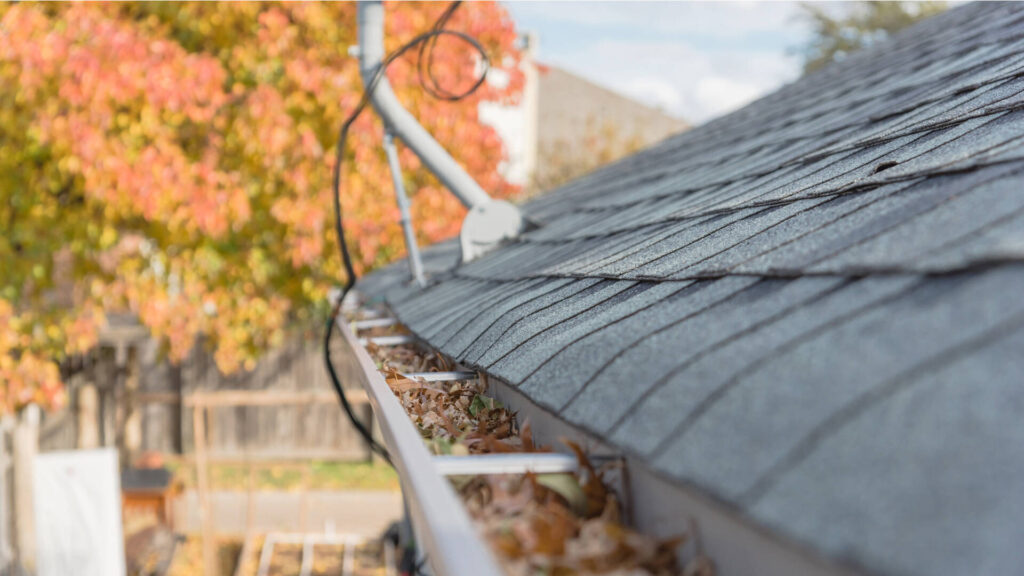
In the diverse climate of New Jersey, where seasons bring their own set of challenges, the importance of gutter cleaning cannot be overstated. New Jersey experiences a range of weather conditions, from heavy rainfalls in spring and summer to snow and ice in the winter months. Each season poses different risks for your gutter system, making regular cleaning and maintenance essential.
- Managing Heavy Rainfall: New Jersey’s spring and summer months often bring heavy rains. A clean gutter system ensures that this rainwater is efficiently channeled away from your home. Clogged gutters during these seasons can lead to water overflow, potentially damaging your home’s siding, causing leaks in your basement, and even affecting the home’s foundation.
- Preventing Ice Dams in Winter: The cold New Jersey winters pose a unique challenge. When gutters are clogged, they trap snow and ice, leading to the formation of ice dams. These ice dams can cause significant damage to your roof and gutters. The weight of the accumulated ice can lead to gutter detachment, and the melting water can seep under roof shingles, leading to costly interior damage.
- Reducing the Risk of Home Damage: Functional gutters play a key role in protecting the overall structural integrity of your home. They prevent soil erosion around the foundation, protect landscaping, and help in maintaining the condition of exterior walls. When gutters are clogged, the unmanaged water can erode the soil, damage gardens, and even lead to wall dampness and paint damage.
- Keeping Pests at Bay: Clogged gutters can become a breeding ground for pests like mosquitoes, birds, and rodents, which can create health hazards and lead to infestations. Regular cleaning helps in preventing these unwelcome guests.
Preparing to Clean Your Gutters
Gutter cleaning, while essential, can be a formidable task. Proper preparation is key to ensuring the job is done safely and effectively. Here’s how you can get ready to tackle your gutter cleaning in New Jersey:
Safety First
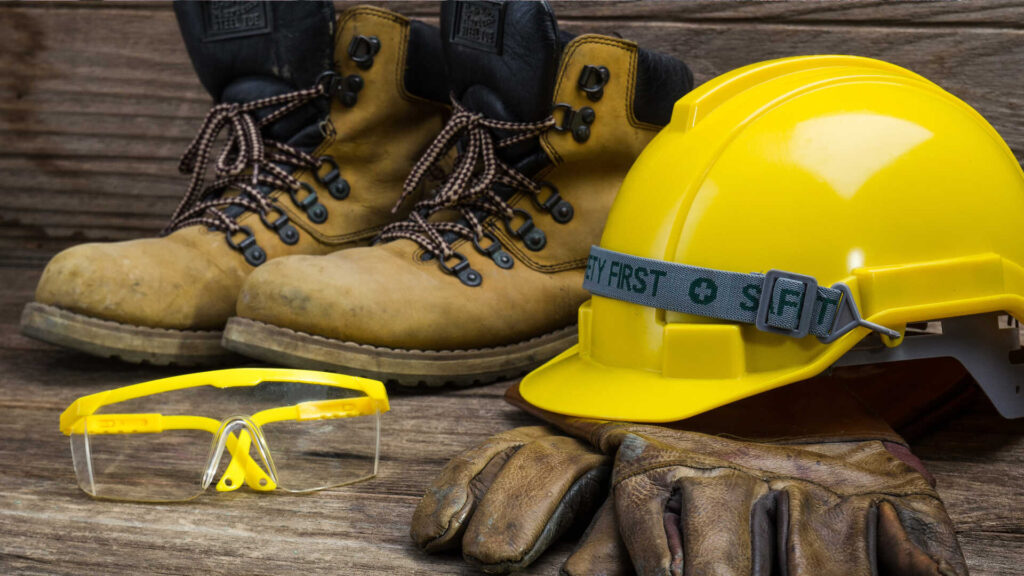
When embarking on gutter cleaning, prioritizing safety is essential. The foremost concern should be ladder safety; ensure that your ladder is both sturdy and stable. It’s important to place it on a level and firm surface, avoiding uneven ground or soft, muddy areas. Always maintain three points of contact with the ladder, such as two hands and one foot for stability. Position the ladder base one foot away from the wall for every four feet of ladder height to ensure it is properly angled.
In terms of equipment, wearing heavy-duty gloves is crucial to protect your hands from sharp objects and debris. Eye protection is equally important, as goggles or safety glasses can shield your eyes from flying dirt, debris, and insects. If you need to carry tools, consider using a tool belt or a bucket with a lanyard.
Electrical hazards are a significant concern. Be aware of the location of power lines near your gutters and maintain a safe distance with ladders and tools to avoid electrical risks. It’s also safer to avoid working alone; having someone to stabilize the ladder and assist in emergencies is invaluable.
Weather conditions can greatly impact safety. Avoid cleaning gutters in inclement weather as wet roofs and strong winds dramatically increase the risk of falls.
Understanding your physical limits is also key. If heights make you uncomfortable or if the condition of your gutters seems too challenging, it’s wiser to seek professional help. The cost savings from DIY efforts are not worth risking your safety.
Gutter cleaning can be physically demanding, so consider your health and physical capabilities before deciding to undertake this task. By following these guidelines, you can ensure that your gutter cleaning process is as safe as possible.
Local New Jersey Regulations

When planning to clean your gutters in New Jersey, it’s crucial to be aware of and comply with local regulations. These rules are in place to ensure safety, environmental protection, and community well-being. Here are some key regulatory aspects to consider:
- New Jersey Plumbing Code: The code mandates that drainage from roofs, paved areas, and similar spaces should lead to an approved storm or combined sewer system, or a designated disposal area. For one- and two-family dwellings, there’s an exception: stormwater can be directed onto lawns or streets, provided it flows away from the property and doesn’t cause a nuisance (Source).
- Permits and HOA Guidelines: Depending on your location in New Jersey, you might need to check with your local municipality or homeowners’ association (HOA) for any specific regulations or permits required for home maintenance activities, including gutter cleaning. Some areas may have specific rules, especially in historic districts or communities with strict HOA guidelines.
- Waste Disposal Regulations: Proper disposal of the debris collected from your gutters is not just an environmental concern but also a legal one. New Jersey has specific guidelines for yard waste disposal, including leaves and twigs. Ensure you’re following these rules, which might involve using designated bags or disposing of waste on specific collection days.
- Noise Control: If you plan to use power tools like leaf blowers or power washers, be aware of local noise ordinances. Many New Jersey communities have specific times during which such noisy activities are permitted, especially in residential areas. Adhering to these times helps maintain good relations with your neighbors and avoids potential fines.
Comprehensive Guide to Gutter Cleaning
Gutter cleaning, though often overlooked, is a crucial task for maintaining your home’s integrity and longevity. Here’s a comprehensive guide to help you effectively clean your gutters:
Inspecting Your Gutters

A thorough inspection of your gutters is an essential first step before commencing any cleaning. This not only helps in identifying areas that need special attention but also aids in averting potential future issues. Begin by walking around your home to visually inspect the gutters. Look for signs of wear such as cracks, holes, rust, or sections that are sagging, as these indicate damage that could impact their functionality. Pay close attention to areas near downspouts, as blockages often occur here.
Don’t limit your inspection to just the gutters. It’s equally important to examine the roof and fascia surrounding the gutters for any signs of water damage or rot, as these areas can be negatively affected by gutter issues. Lastly, remember to prioritize safety during your inspection, especially if using a ladder. Ensure the ladder is stable and avoid overreaching or stretching too far, as this can lead to accidents.
Cleaning Out Debris
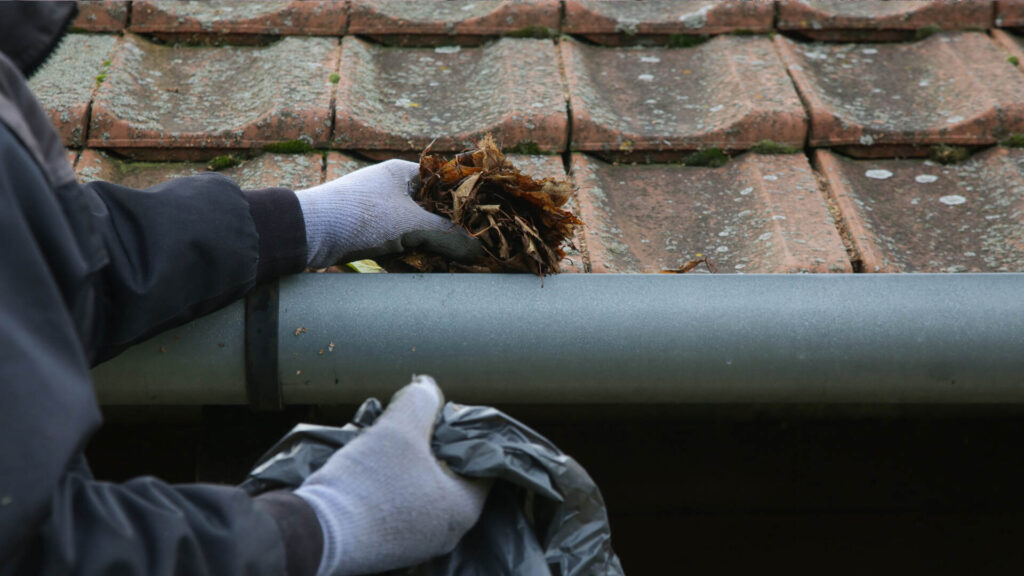
When starting the task of cleaning out your gutters, it’s strategic to begin at the section of the gutter that is closest to a downspout. This allows for an efficient cleaning flow, as the debris you dislodge and clear will naturally move towards the drainage outlet. Start by focusing on the larger, more visible pieces of debris such as leaves, broken twigs, and possibly bird nests. These larger items are usually the primary contributors to blockages and their removal can greatly enhance the flow of water through the gutters.
While removing this debris, you can either use your hands or a small trowel or gutter scoop. If using your hands, make sure you’re wearing sturdy gloves to protect against sharp edges and dirt. Gently scoop or grab the debris and carefully place it into a bucket or garbage bag. This method helps avoid dropping debris onto your yard or garden, making cleanup easier and more efficient.
After dealing with the larger debris, turn your attention to the more stubborn and compacted dirt and smaller particles that might be clinging to the bottom or sides of the gutter. For these, a gutter scoop is highly effective. Its design allows it to conform to the shape of the gutter, making it easier to scrape up any compacted material. Be mindful during this process to use gentle motions. While the gutters are designed to be durable, applying too much force or using a sharp tool can scratch or even puncture the gutter material, leading to potential leaks or further damage.
Flushing the Gutters
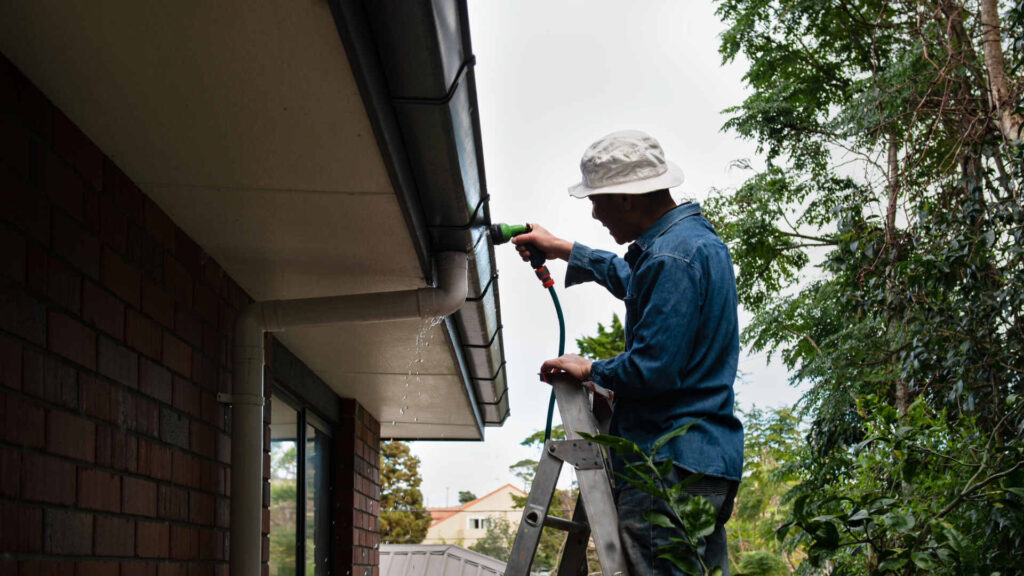
After the manual removal of larger debris from your gutters, it’s important to proceed with flushing them out. This step is crucial for clearing away any lingering small particles and for checking the gutters’ overall functionality. Begin with a standard garden hose fitted with a spray nozzle, which provides a controlled and powerful stream of water. If available, a gutter cleaning wand can be highly effective, allowing extended reach and more thorough cleaning without frequent repositioning.
Start the flushing at the end of the gutter furthest from the downspout. This method ensures that the water pushes any residual debris towards the downspout, effectively clearing the gutter pathway. While doing this, observe the water flow carefully. It should move steadily towards the downspout without any signs of pooling or spilling over the sides. Problems with water flow might indicate a blockage or an alignment issue within the gutter system.
Pay special attention to the seams and joints of the gutters during the flushing process. These areas are common sites for leaks, and any dripping or leaking observed would suggest the need for repairs. The downspouts also require attention during this step. Water should flow freely out of them. If you notice any backup or overflow, it could indicate a blockage, possibly requiring a plumber’s snake or a high-pressure nozzle to clear it effectively.
Other Gutter Cleaning Methods
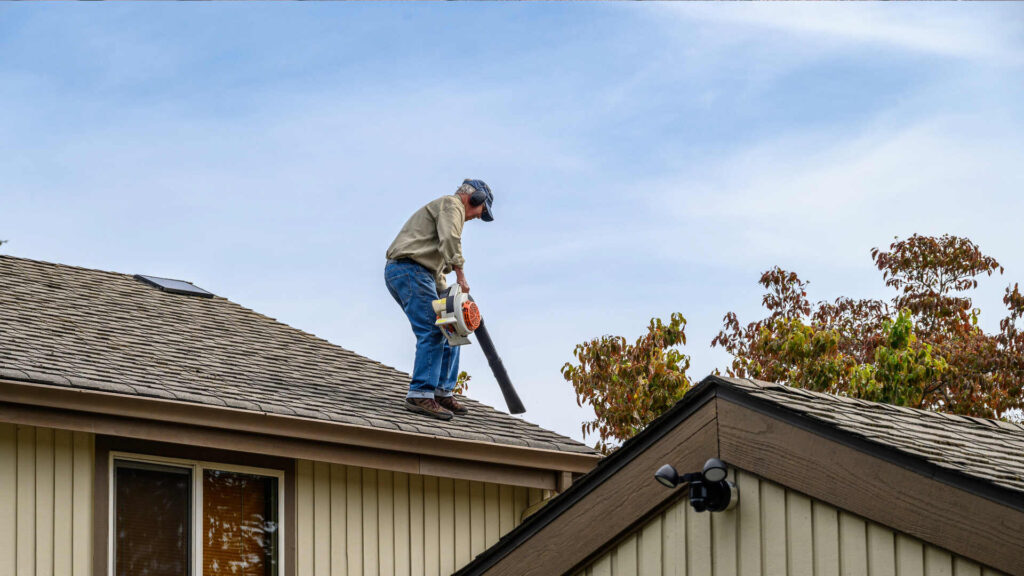
While manual removal of debris and flushing are common and effective methods for gutter cleaning, other techniques can be utilized, especially if you’re looking for ways to make the job easier or safer. Here are some alternative gutter cleaning methods:
- Wet/Dry Vacuum: Using a wet/dry vacuum with a specialized gutter cleaning attachment can make the job less labor-intensive. These attachments typically have long, curved nozzles designed to fit into the gutter and can be used to suck up debris. This method is particularly effective for removing dry leaves and small twigs.
- Leaf Blower: For gutters filled with dry leaves, a leaf blower can be a quick way to clear them out. Some leaf blowers come with gutter cleaning attachments which allow you to blow debris out of the gutter while standing on the ground. This method is ideal for maintaining gutters without having to climb a ladder.
- Power Washer: A power washer can be used for a more thorough cleaning, especially for gutters with compacted debris. The high pressure can dislodge and remove debris that is stuck to the gutters. However, this method requires caution as the powerful stream can damage the gutters or roof if not used properly.
When to Call a Professional Gutter Cleaner
Recognizing when to contact a professional gutter cleaner can be crucial for both safety and effectiveness. Consider professional services in the following scenarios: if your home has high or hard-to-reach gutters, when you notice significant damage or wear during inspections, after severe weather events for comprehensive checks, or if pests or nests are present.
Safety concerns, especially unease with heights or lack of proper equipment, are also valid reasons to opt for a professional. Additionally, for those with busy schedules or lacking the necessary tools, professional cleaners offer a convenient and efficient solution. Regular maintenance contracts with professionals can further ensure consistent care and upkeep of your gutters, keeping them in optimal condition while protecting your home.
Conclusion
Gutter maintenance, especially in a state like New Jersey with its diverse climate, is an essential aspect of home care. The variety of weather conditions, from intense rainfall to severe winters, underscores the importance of keeping gutters in top shape. Ensuring that gutters are well-maintained is key to protecting your home’s foundation and structural integrity, transcending beyond mere functionality to become a crucial part of home preservation.
Deciding between DIY gutter cleaning and hiring professionals depends on several factors, including the accessibility of your gutters and personal safety considerations. Regular inspections and prompt repairs are important for reducing the need for frequent cleanings. Considering preventative steps like installing gutter covers like Leaf Shelter or Microguard can also ease maintenance efforts. By focusing on these aspects, homeowners can effectively safeguard their gutter systems and, consequently, their homes.
Fact checked by Jacob Petrosky 12/6/2023